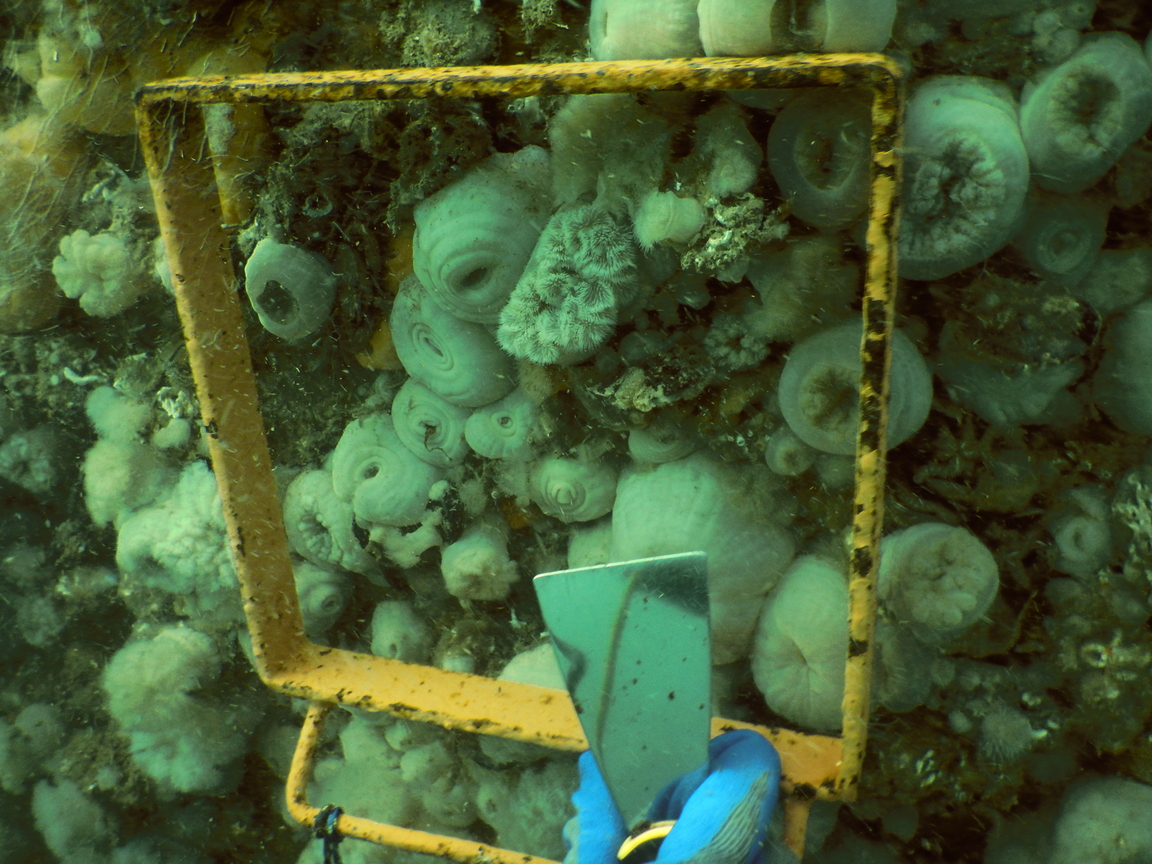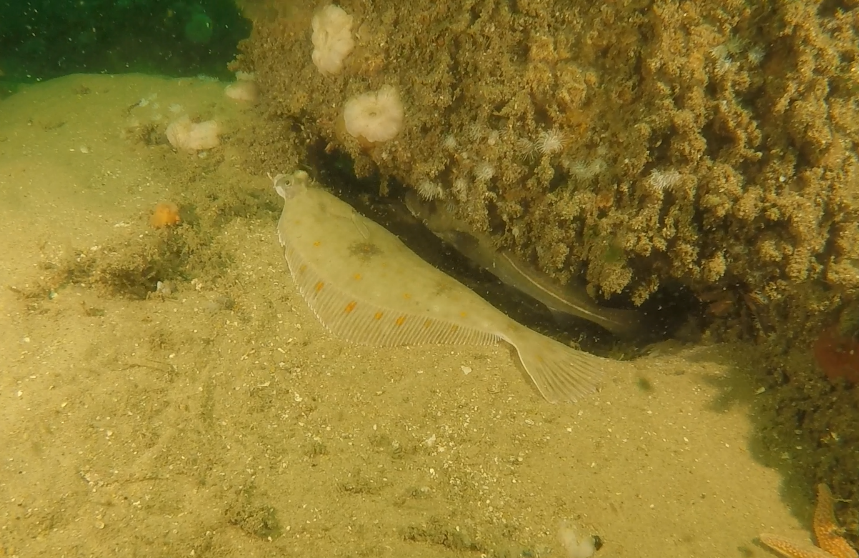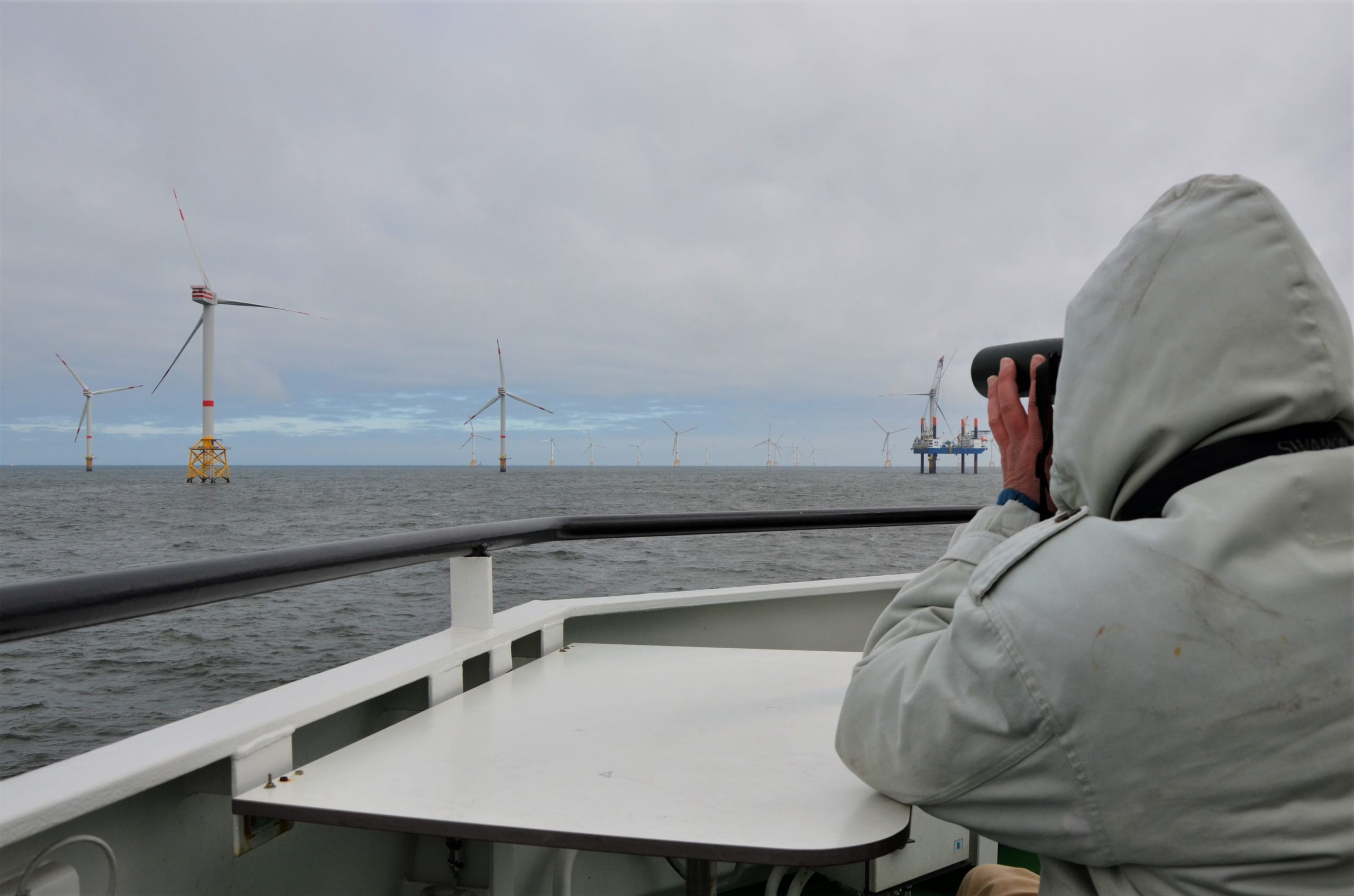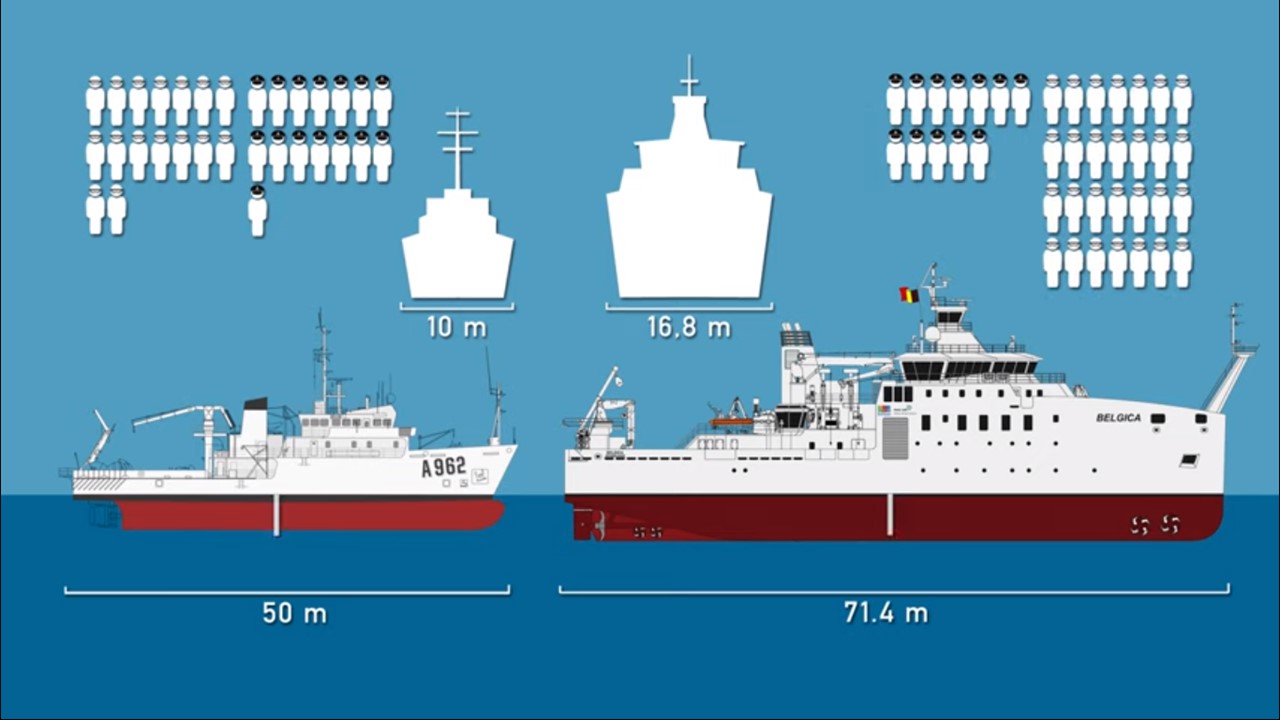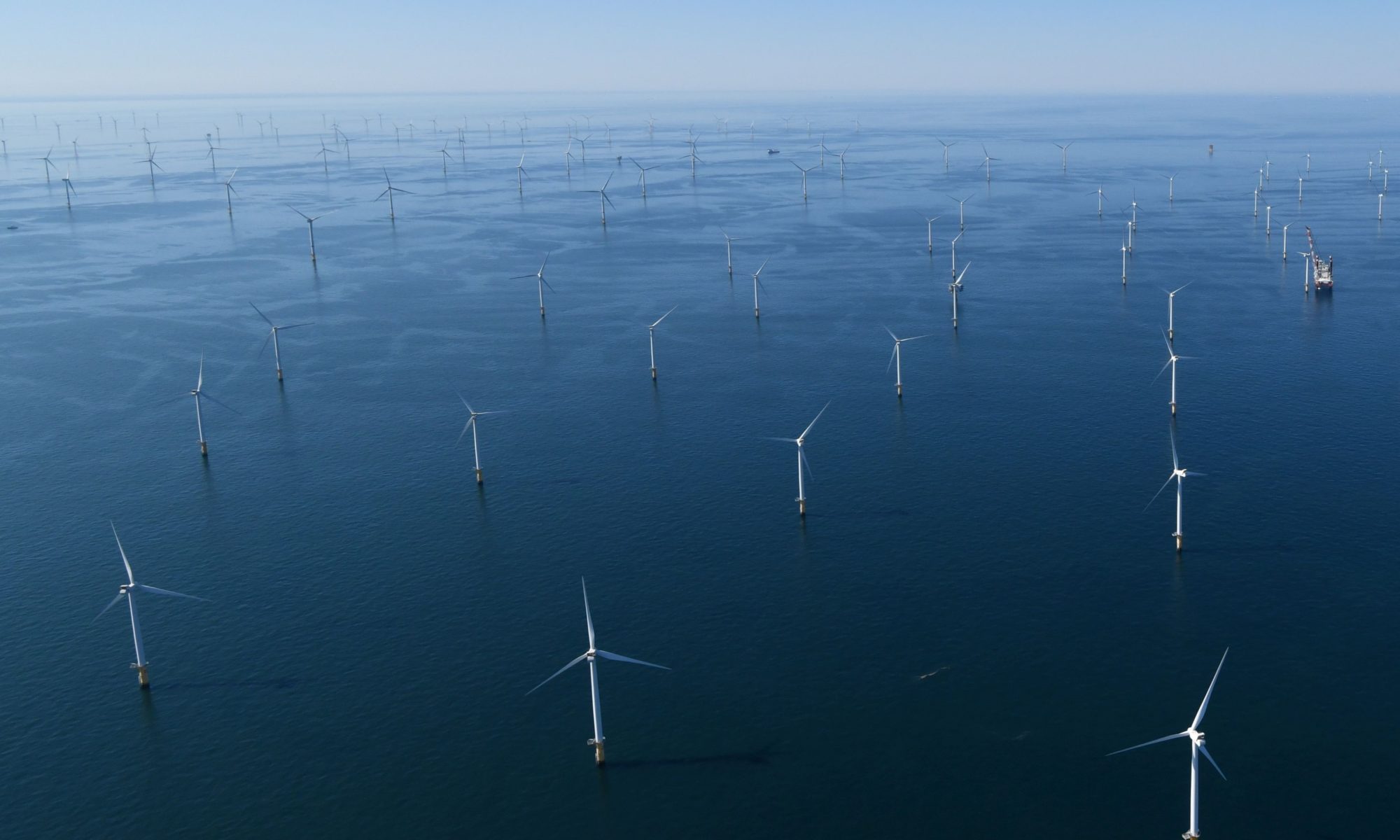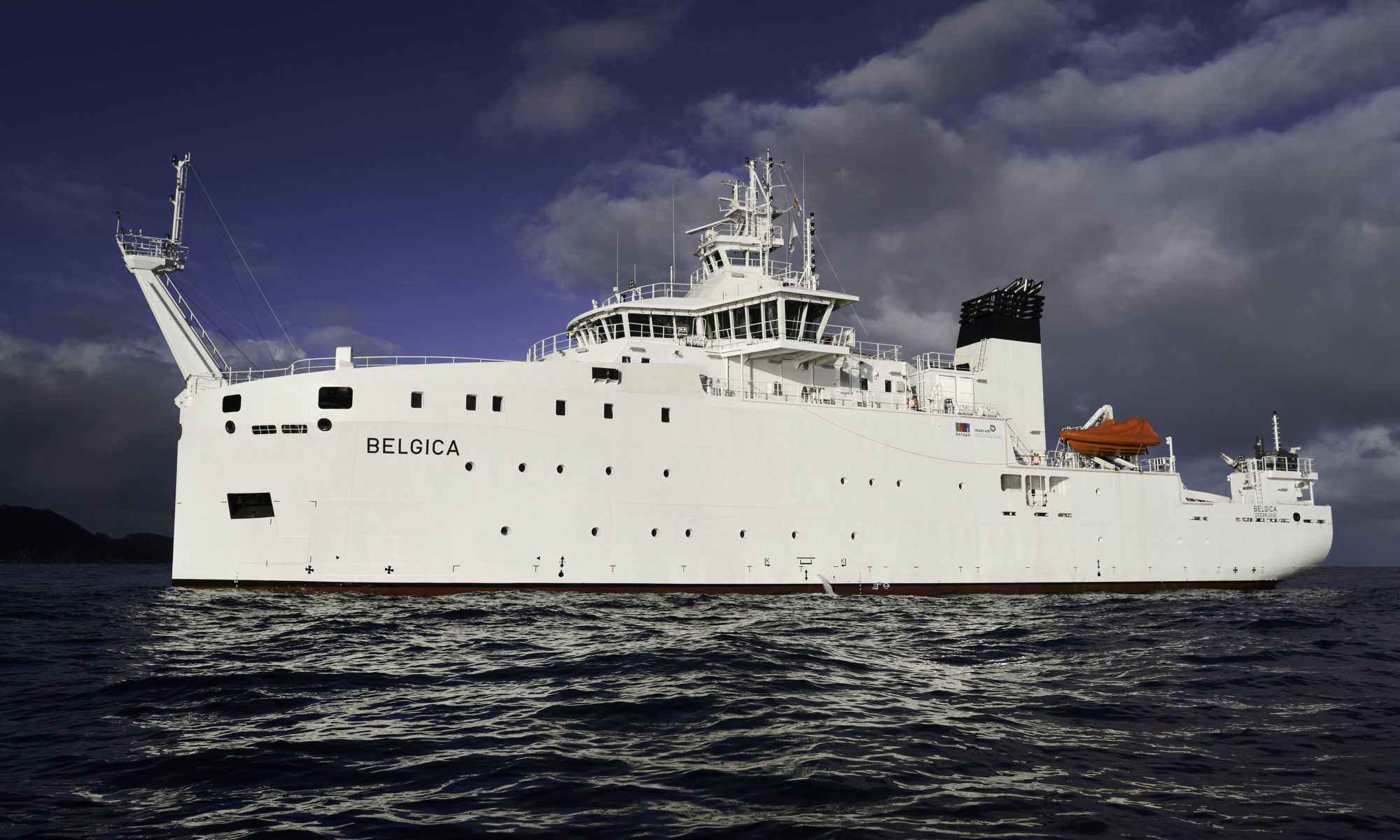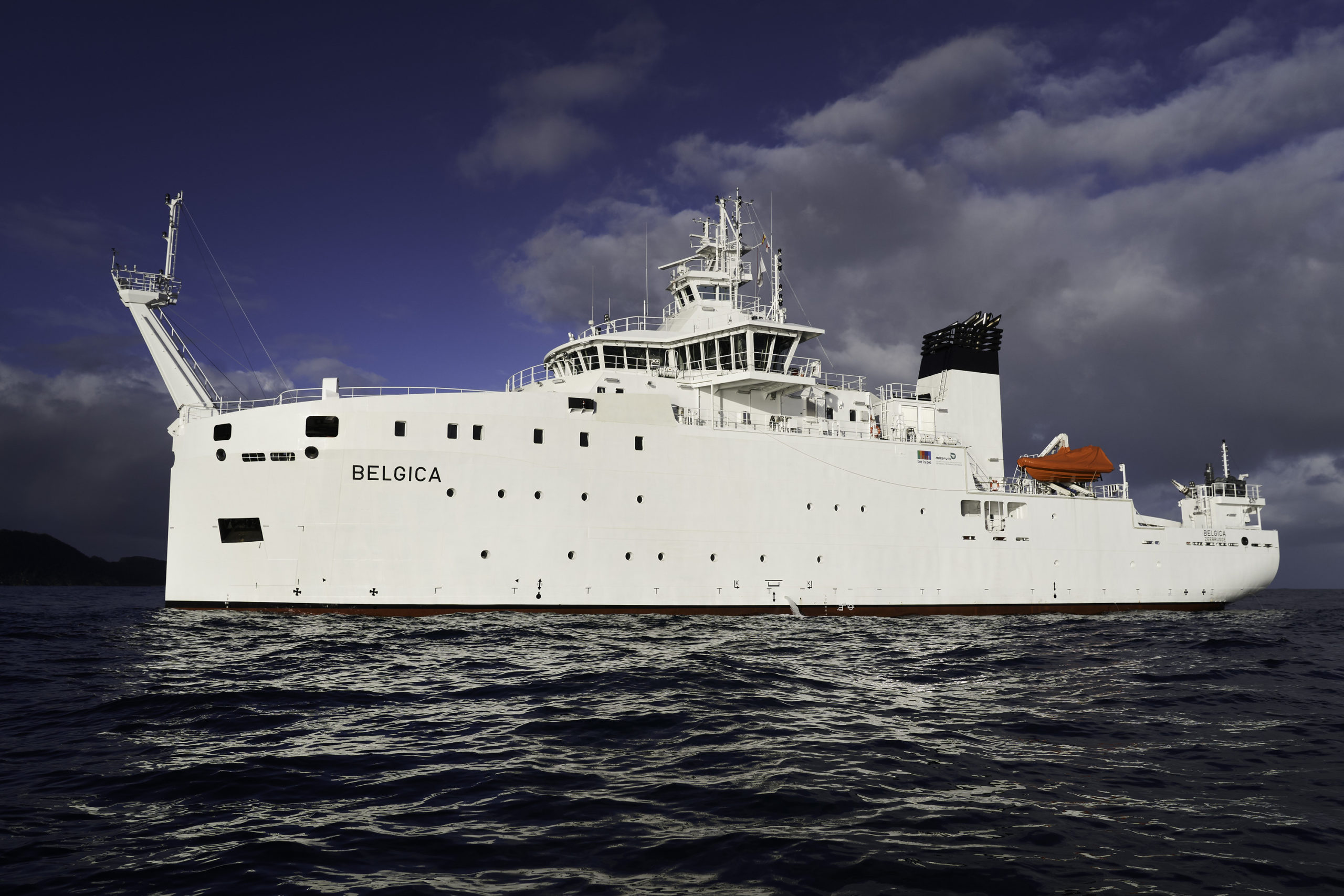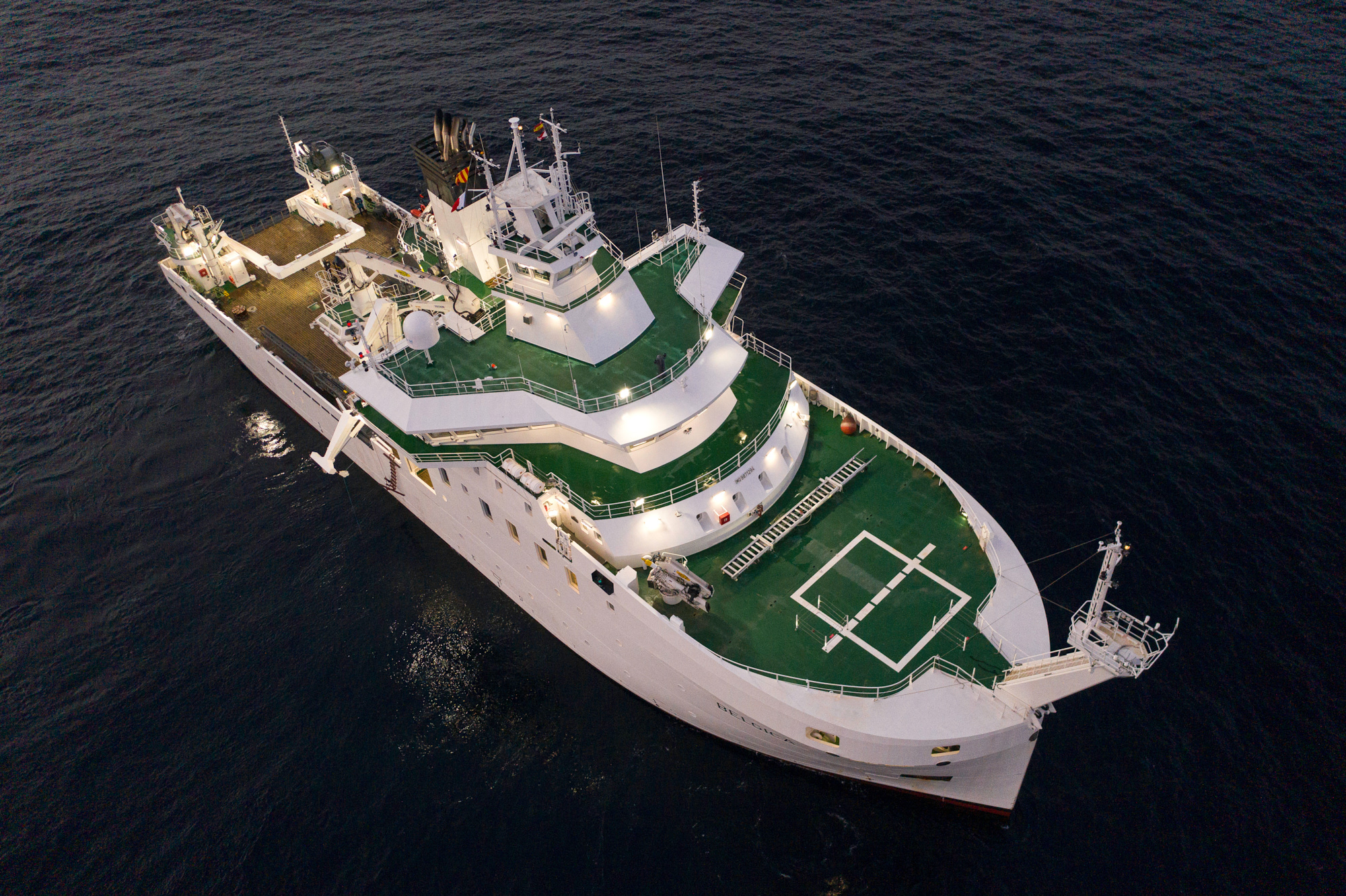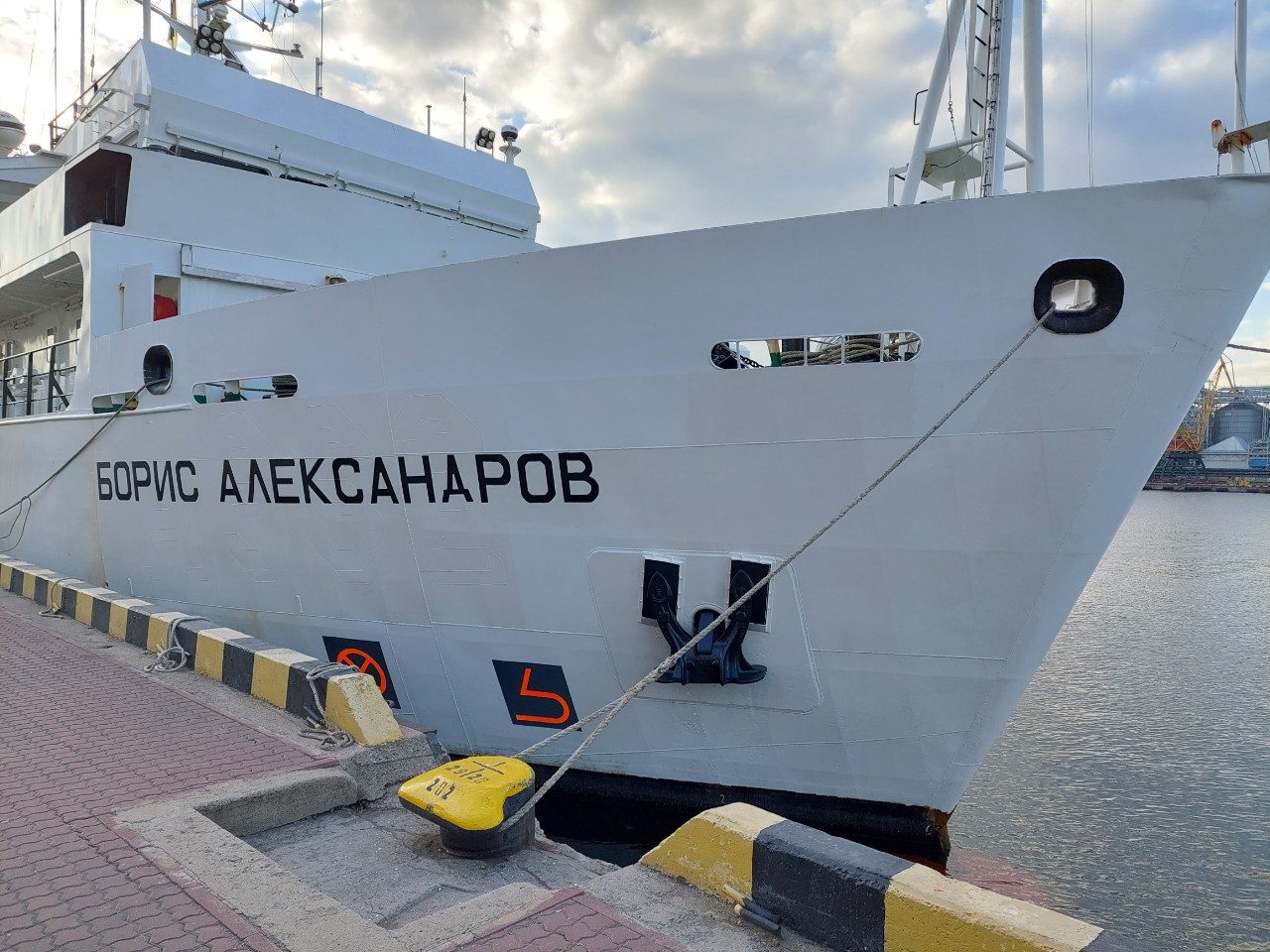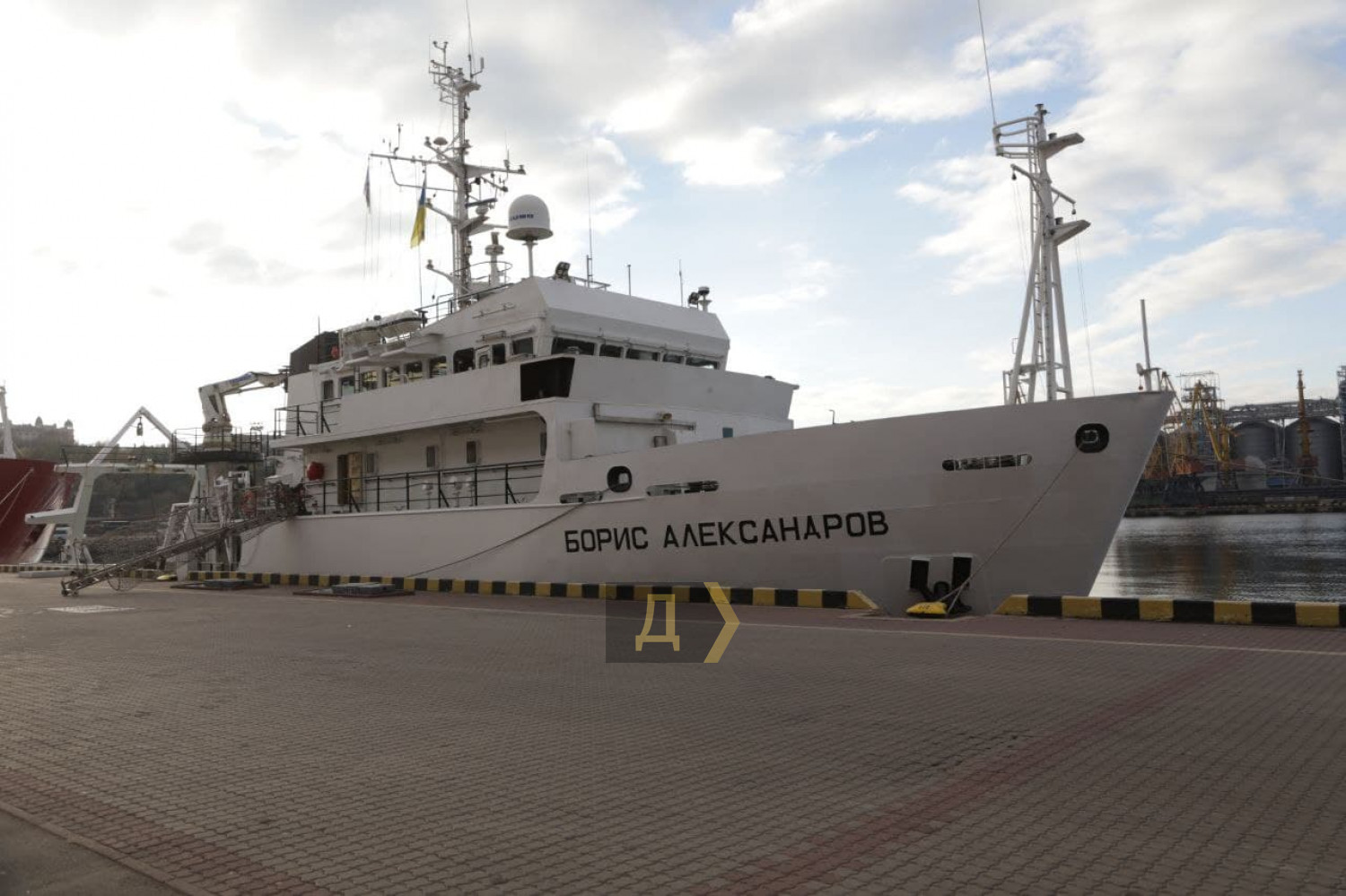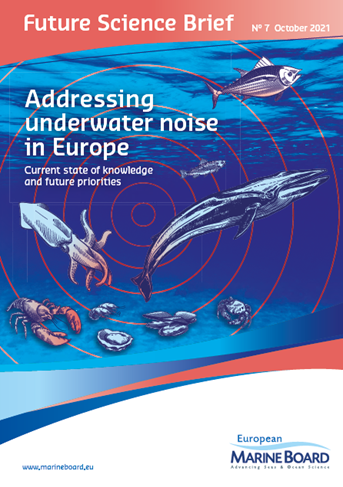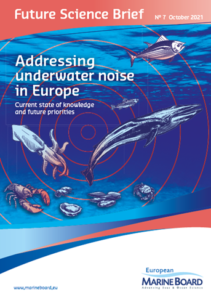On Thursday 31 March 2022, the Deputy Prime Minister and Minister for Justice and the North Sea, Mr Vincent Van Quickenborne, and the State Secretary for Relance and Strategic Investments, in charge of Science Policy, Mr Thomas Dermine, visited the new Belgian research vessel ‘RV Belgica’ (‘RV’ stands for ‘Research Vessel’). The presence of the Minister of Defence, Mrs Ludivine Dedonder, was also foreseen, but unfortunately she had to excuse herself. During the visit, the emphasis was on the unique cooperation between the three policy areas with regard to the management, operation and deployment of the vessel. Special attention was also paid to the new scientific challenges that Belgian and international marine scientists will face thanks to the new RV Belgica. The visit took place at the naval base of Zeebrugge, the home port of the new RV Belgica.
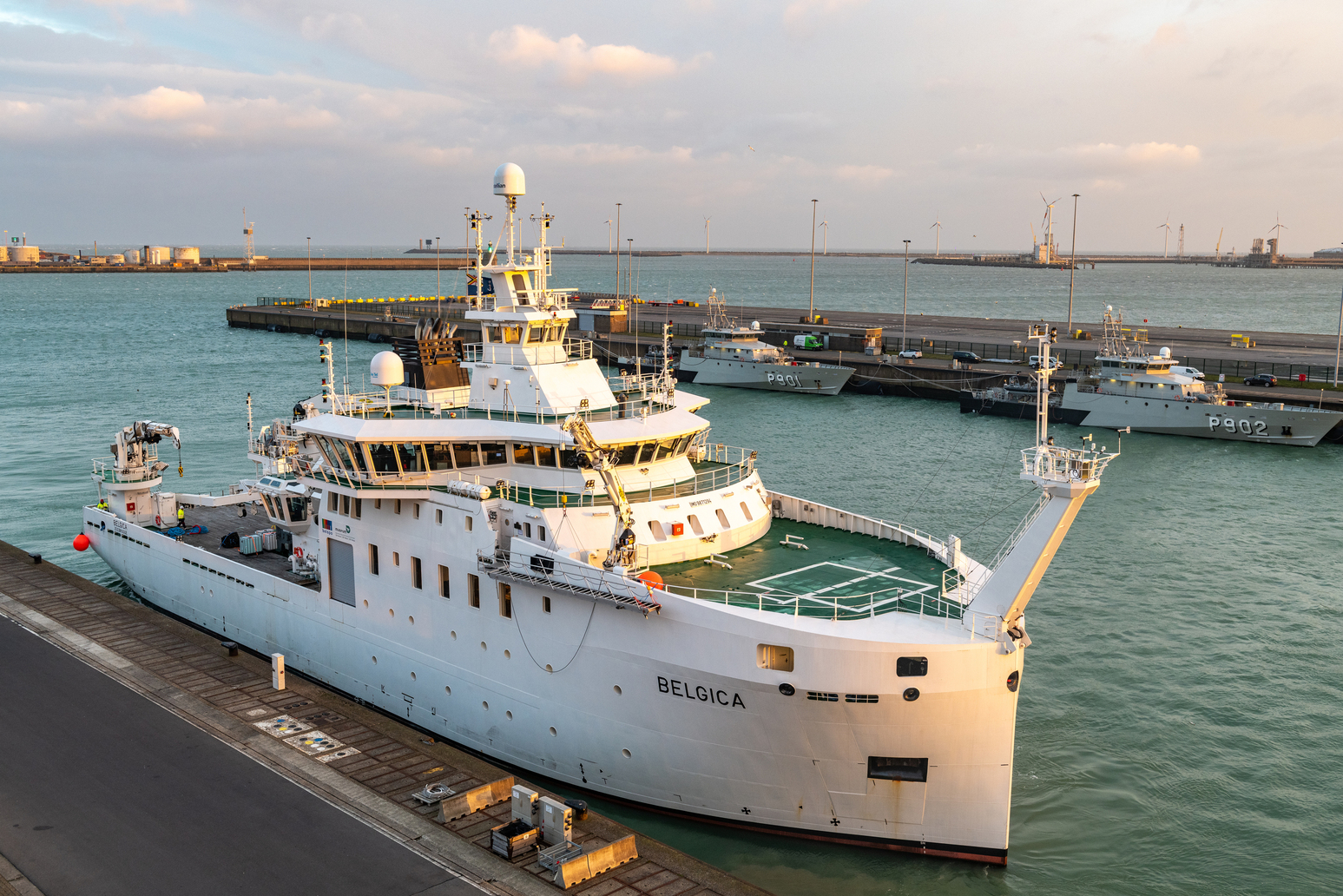
Since Belgium disposed of a marine research vessel in the form of the former RV A962 Belgica (1984 – 2021), our scientists have been punching above their weight in both national and international contexts with regard to marine research and monitoring, marine spatial planning and Blue Economy. The ship also played an important role in the training of marine scientists. The need for a high-performance national research ship cannot be underlined enough. After more than 1,000 scientific campaigns, more than one million kilometres travelled and 37 years of service, the old RV Belgica needed to be replaced so that Belgium can remain at the forefront of marine science and technology.
The new RV Belgica arrived in Belgium on 13 December 2021 and, after the necessary tests and training, started her scientific activities on 27 January 2022. It was the culmination of a long process: feasibility and financial studies on a possible replacement were carried out in the period 2005-2014, on 28 October 2016 the Council of Ministers decided to build a new research vessel, on 31 March 2017 the public contract for the construction was launched, and on 16 March 2018 the contract was finally awarded to the Spanish Freire Shipyard (Vigo). After a design study, the construction started concretely on 13 February 2019 with the cutting of the steel. The keel laying on 27 March 2019 and the first launch on 11 February 2020 were important milestones in the construction process.
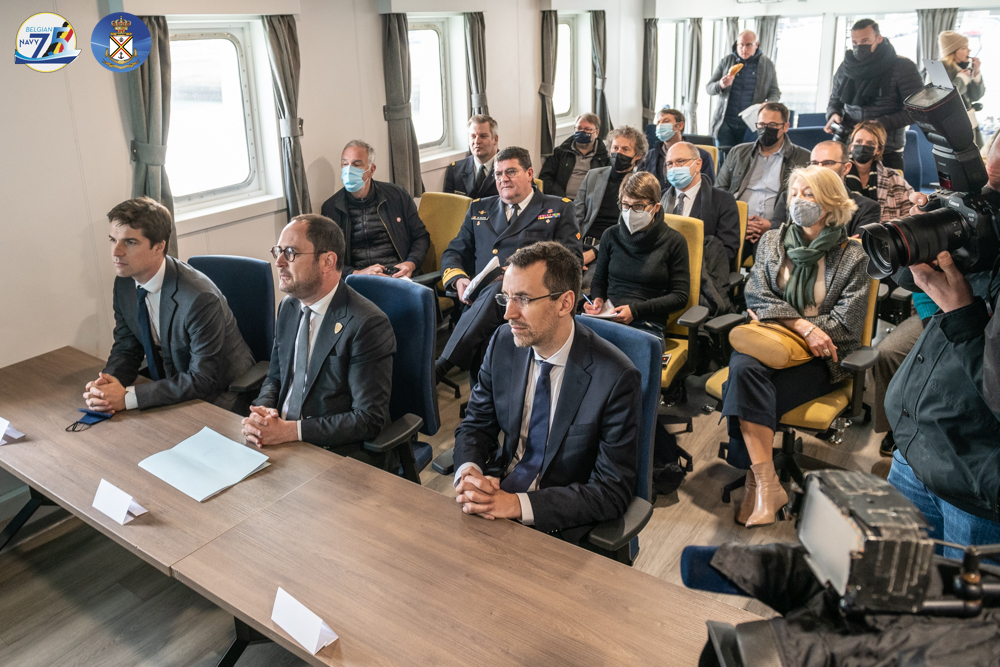
Unique cooperation
The federal government’s departments of Science Policy, Defence and the North Sea not only worked closely together to realise the new RV Belgica, but are also major users and clients of the ship. The ministerial visit of 31 March was filled with a guided tour of the ship and expert explanations about the ship and her missions by Corvette Captain and Captain of the RV Belgica Gaëtan Motmans, and by Dr. Lieven Naudts, coordinator RV Belgica at the RBINS. Finally, the Golden Book of the new Belgica was signed.
Thomas Dermine, Secretary of State for Science Policy: “The new RV Belgica has the most modern equipment on board and has four times more laboratory space than the previous Belgian research vessel. This will allow the scientific community to address new challenges from the Mediterranean Sea to above the Arctic Circle. The RV Belgica will contribute significantly to Europe’s world leadership in marine exploration.”
Vincent Van Quickenborne, Deputy Prime Minister and Minister of the North Sea: “The new Belgica is an icon for the research world and invaluable for North Sea policy. Among other things, it is responsible for monitoring the effects of sand extraction, wind farms and the Paardenmarkt munitions dump. In our North Sea, we are pioneers in many areas: windmills, autonomous shipping, marine spatial planning and also scientific research. With this ship, Belgian scientists can punch above their weight in marine research.”
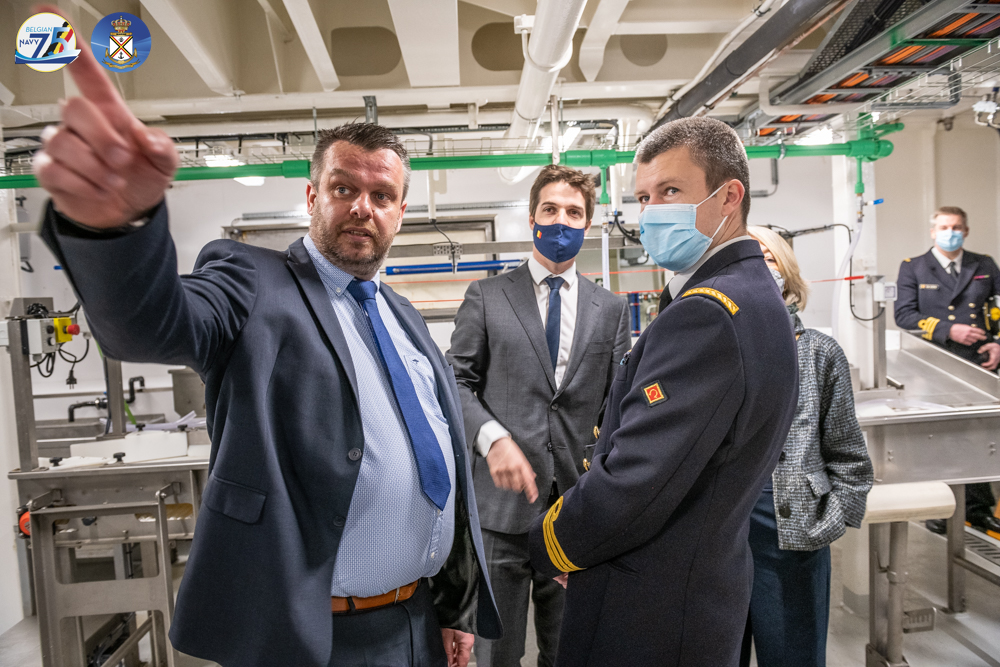
The cooperation between the policy areas translates into the practical aspects of the operation and management of the RV Belgica: the Belgian Science Policy Office (BELSPO) represents the Belgian State as the owner of the RV Belgica, the Royal Belgian Institute of Natural Sciences (KBIN) manages the calendar, budget and scientific instrumentation of the multidisciplinary research vessel, and the Belgian Navy component provides the bridge personnel and the home port of Zeebrugge. In this way, the cooperation model around the former Belgica, which dates back to the 1960s and can be considered a success, is continued. The new Belgica now also involves a new partner: the private French operator Genavir, which also manages the French oceanographic fleet, is responsible for the integrated management and operation of the ship.
Missions and specifications
The new multidisciplinary RV Belgica guarantees the observance of national and international obligations of our country and ensures the continuity of support to marine sciences (fishery, biology, geology, climate, chemistry, …). Thus, scientific research by universities and research institutes as well as monitoring of the state of Belgian and surrounding marine waters are part of the tasks. The monitoring activities support, among others, a series of dossiers which fall under the competence of Minister for the North Sea Van Quickenborne, such as the national implementation of the EU Marine Strategy Framework Directive and the documentation of the ecological impact of various human activities at sea. In this way, the knowledge necessary to support the Blue Economy is built up. Think for example of sustainable fishing, wind farms at sea, sand and gravel extraction, mining activities in the deep sea, energy storage off the coast, etc. Just like the former RV Belgica, the new research vessel will also be active in the European EUROFLEETS network, which allows international scientists to obtain ship time on foreign research ships.
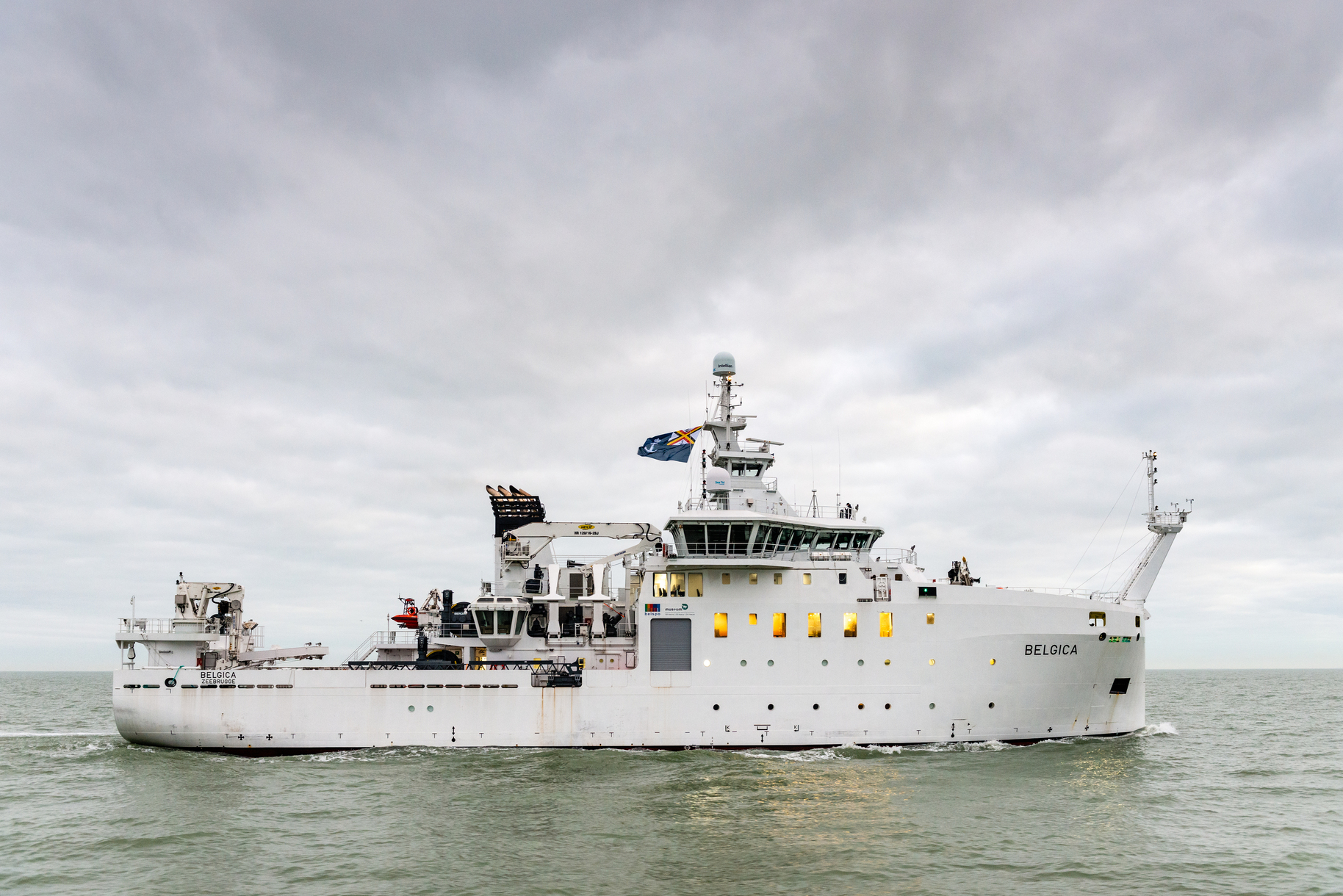
However, the new RV Belgica also allows the scientific community to focus on new challenges. Indeed, compared to its predecessor, the new ship is larger (71.4 m compared to 50 m), and offers more space to scientists (four times more laboratory space with the capacity to take up to 28 scientists on board). The new RV Belgica is also equipped with state-of-the-art scientific equipment that, among other things, allows samples to be taken to a depth of 5,000 m. It is also a silent ship (important for fisheries research, among other things), with a light ice strengthening to be able to conduct research in Arctic areas during the summer. Although the North Sea remains the main focus area, the research area extends further: northwards to above the Arctic Circle, further south including the Mediterranean and Black Seas, and westwards to the Atlantic Ocean. The vessel has an autonomy of 30 days and will carry out research for up to 300 days at sea each year.
Since the start of operations on 27 January 2022, several research groups have conducted their first scientific campaigns with the new RV Belgica. The experiences were evaluated very positively. So far, the focus has been on the Belgian part of the North Sea, but in 2022, some international campaigns are already on the agenda. This year, the new Belgica will also be active in English, Irish, French, Spanish, Portuguese and Italian waters. For 2023, a first polar expedition is being looked forward to, with Greenland in the crosshairs. The Belgian Navy is also looking forward to many data collected by the Belgica, for example, in the future the new mine-fighting vessels will use Belgica information when searching for mines on the sea floor.
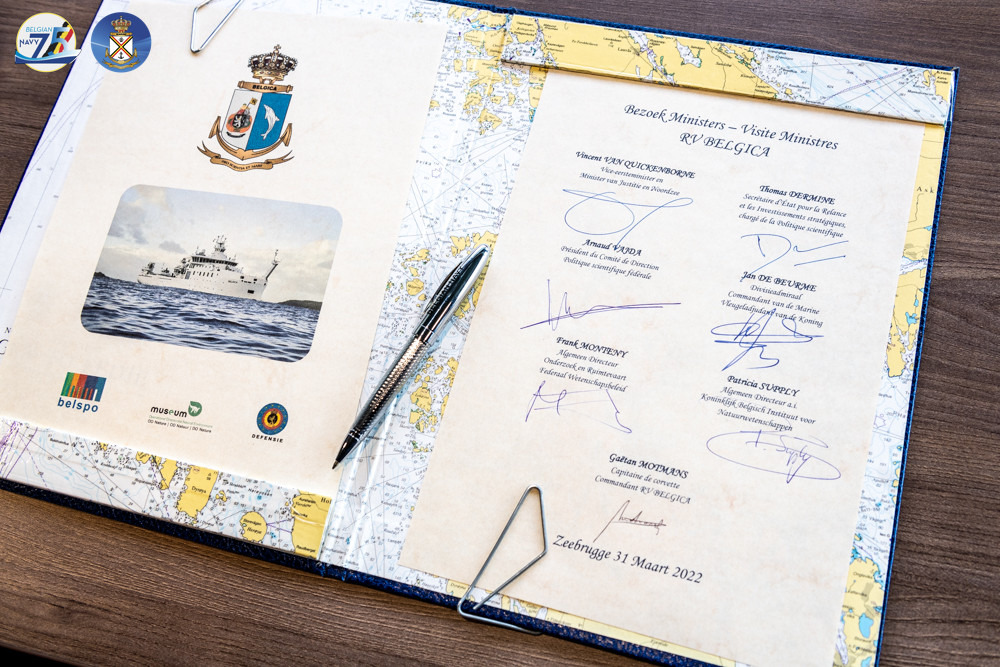
Additional information and future events
The new RV Belgica will be inaugurated on Saturday, 25 June in the city of Ghent. This will happen in the presence of Her Royal Highness Princess Elisabeth, who accepted to be the godmother of the research vessel. During the weekend of 25 and 26 June, the general public will also have the opportunity to visit the ship and learn more about various scientific activities. The press will receive more details about the full programme, press moments and registration possibilities in due time.
More information on the new RV Belgica can be found on the following websites:
- https://odnature.naturalsciences.be/belgica/en/ – Website RV Belgica (RBINS) – Focus on activities, specificatiibs and equipment.
- https://www.belspo.be/belspo/NewRV/index_en.stm – Website RV Belgica (BELSPO) – Additional detail on the timeline to the new Belgica, the construction process and specific research projects funded by BELSPO.

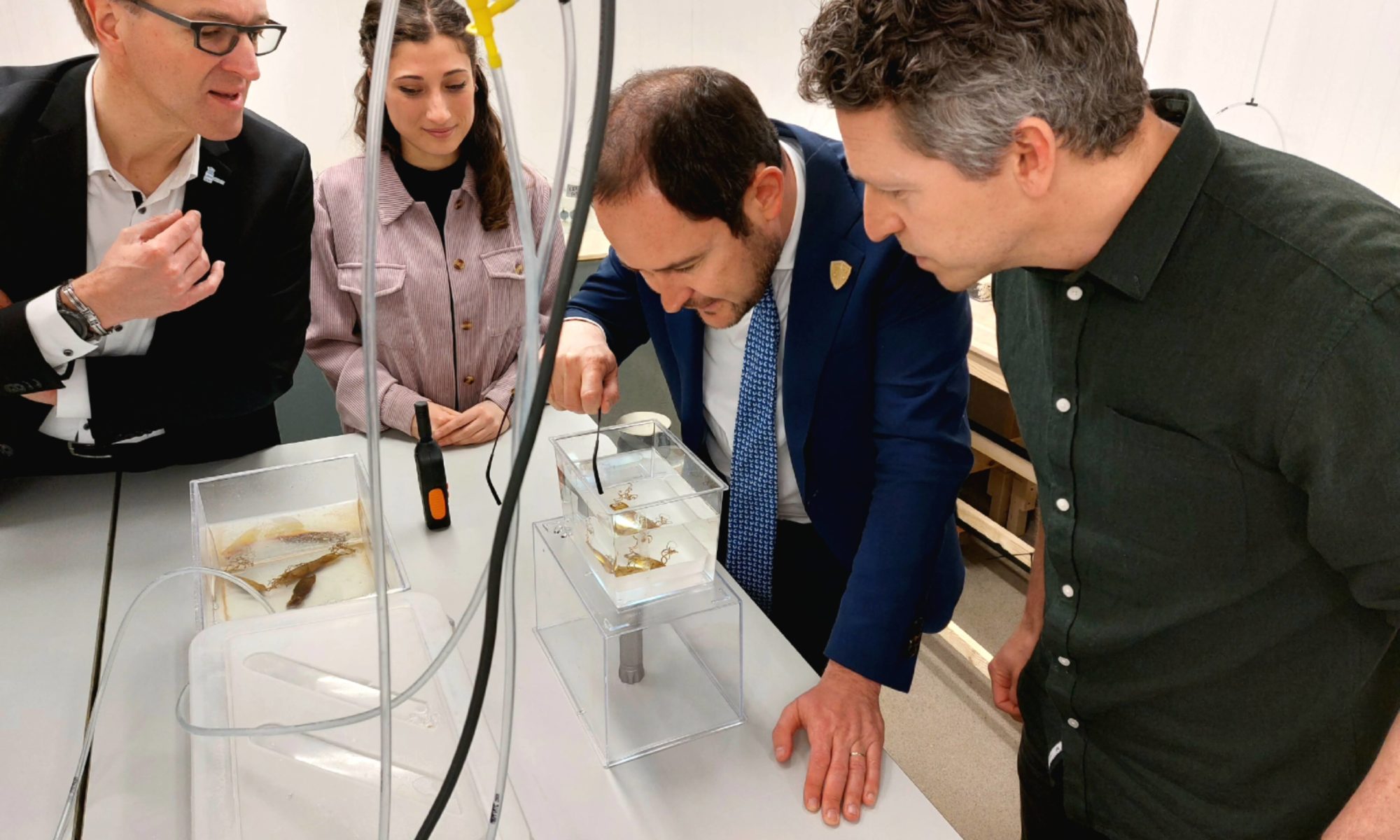
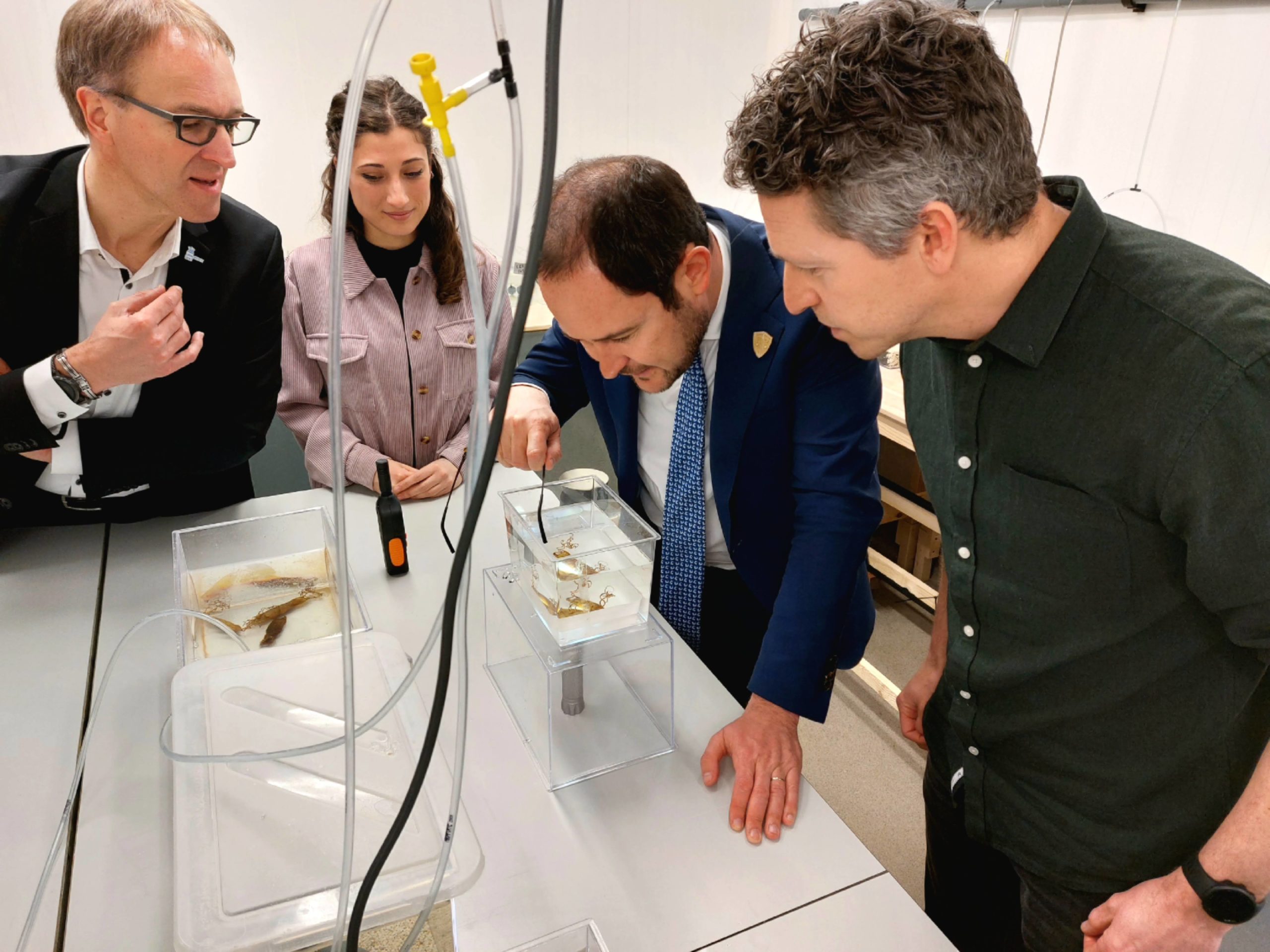
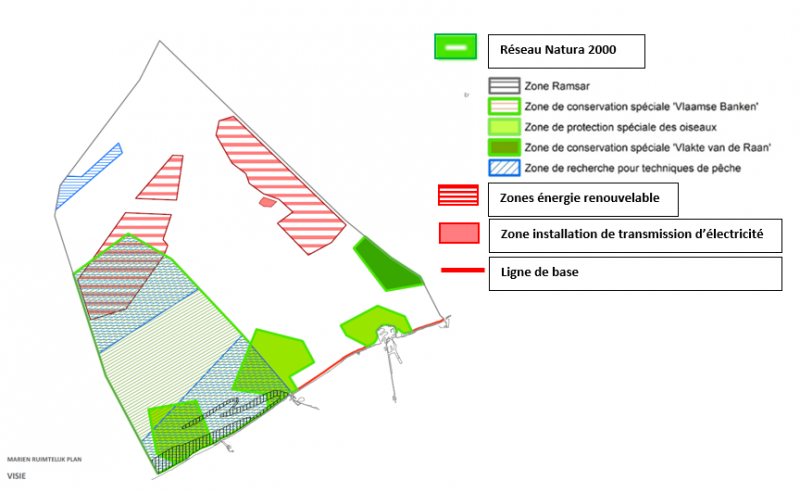
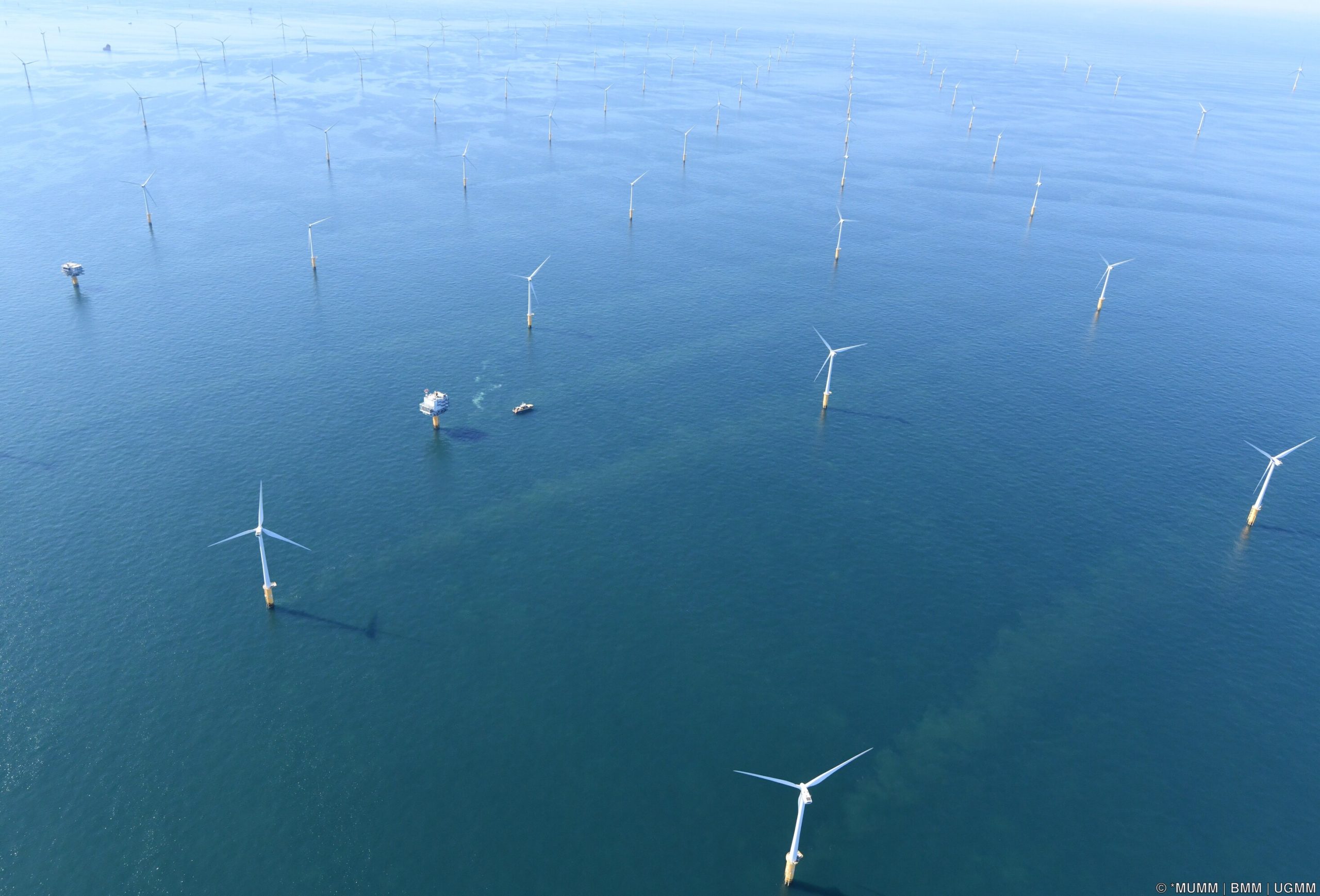

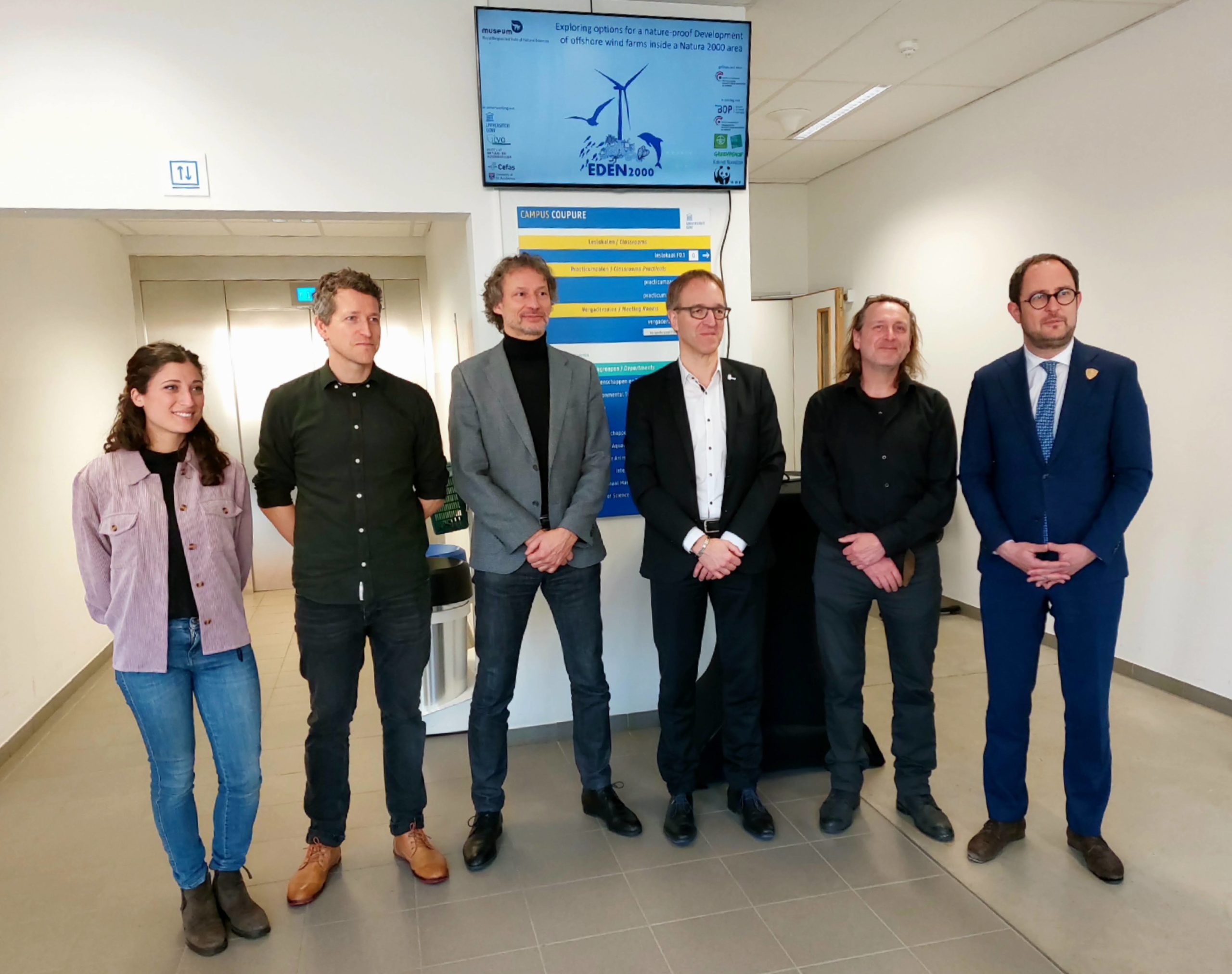
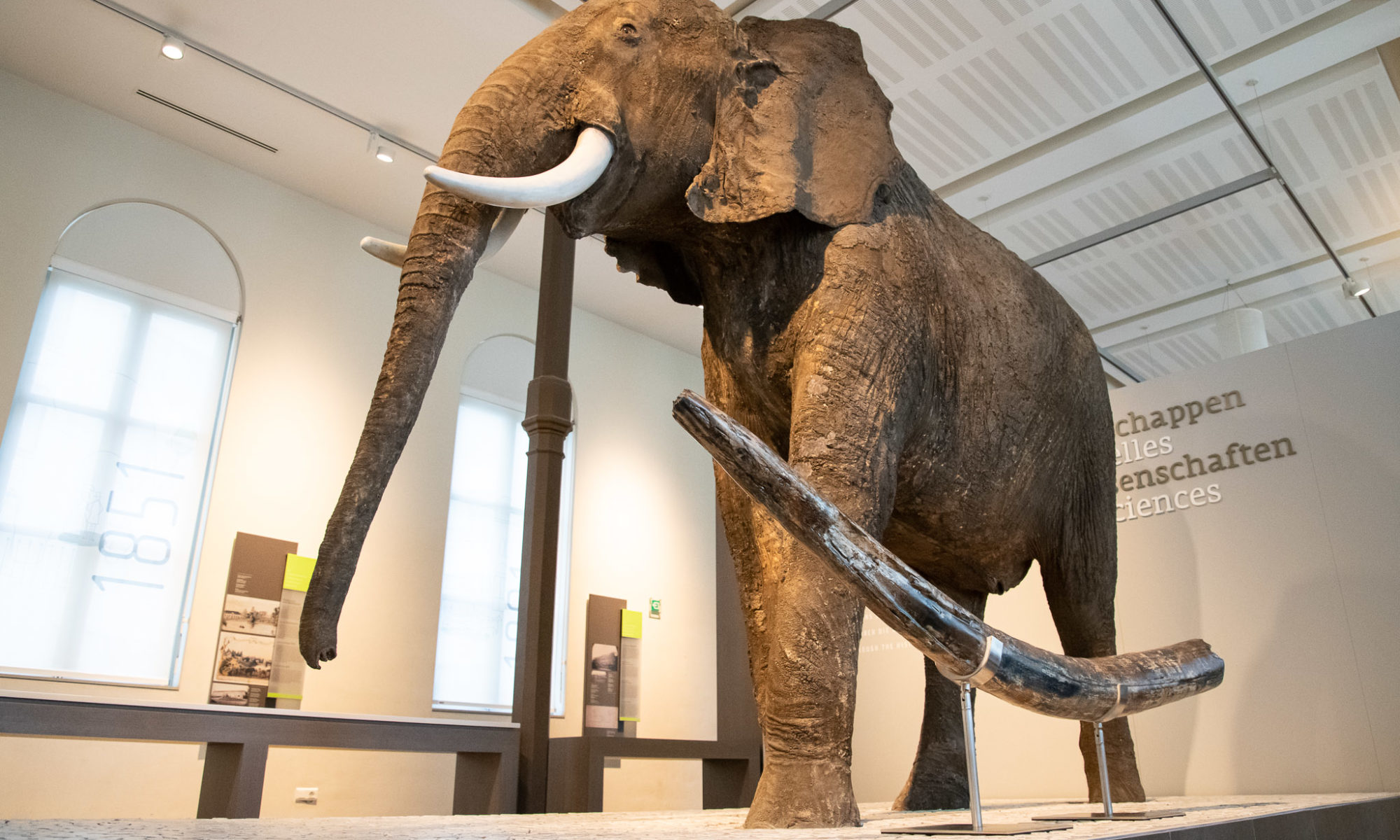
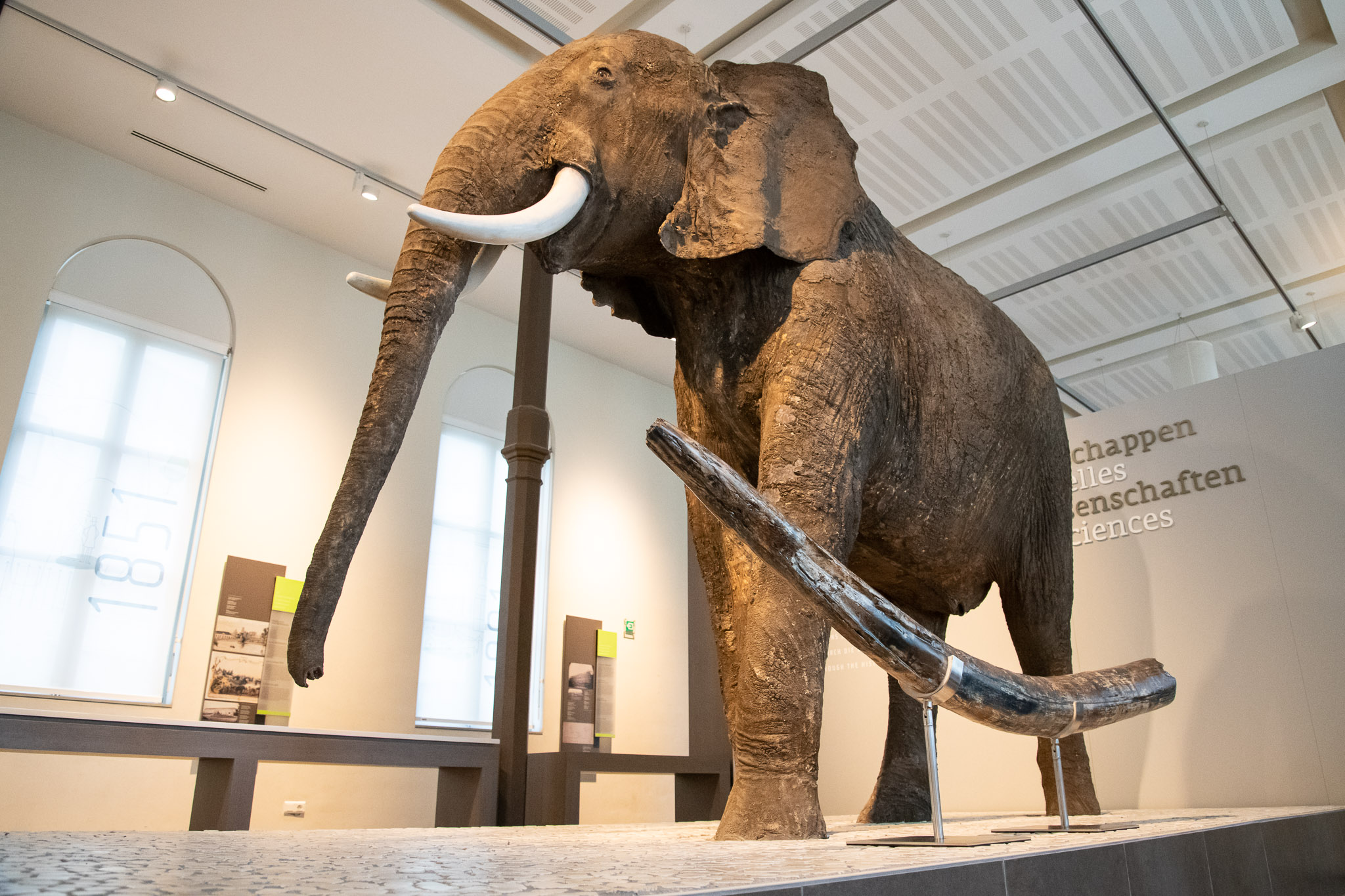

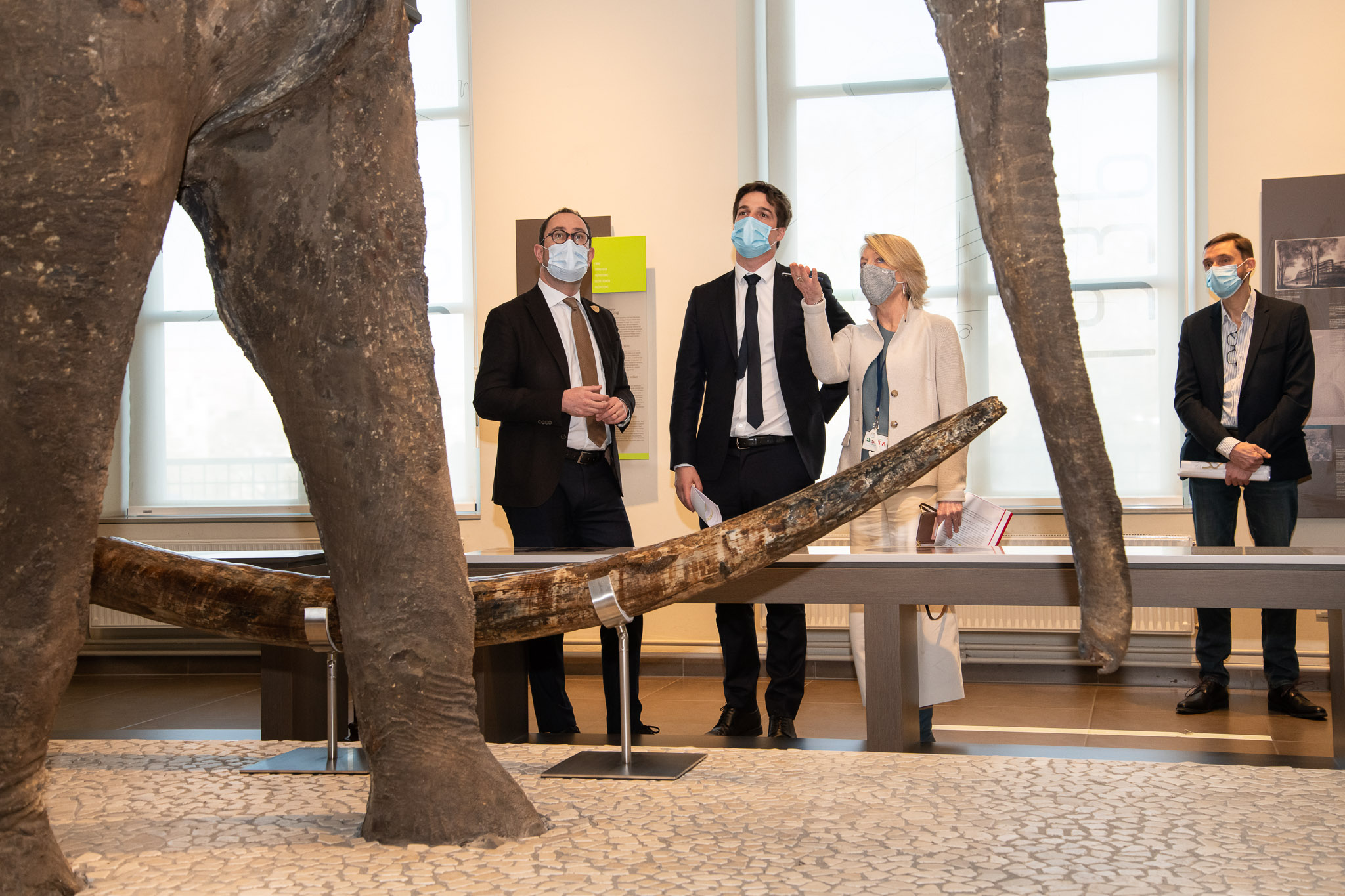
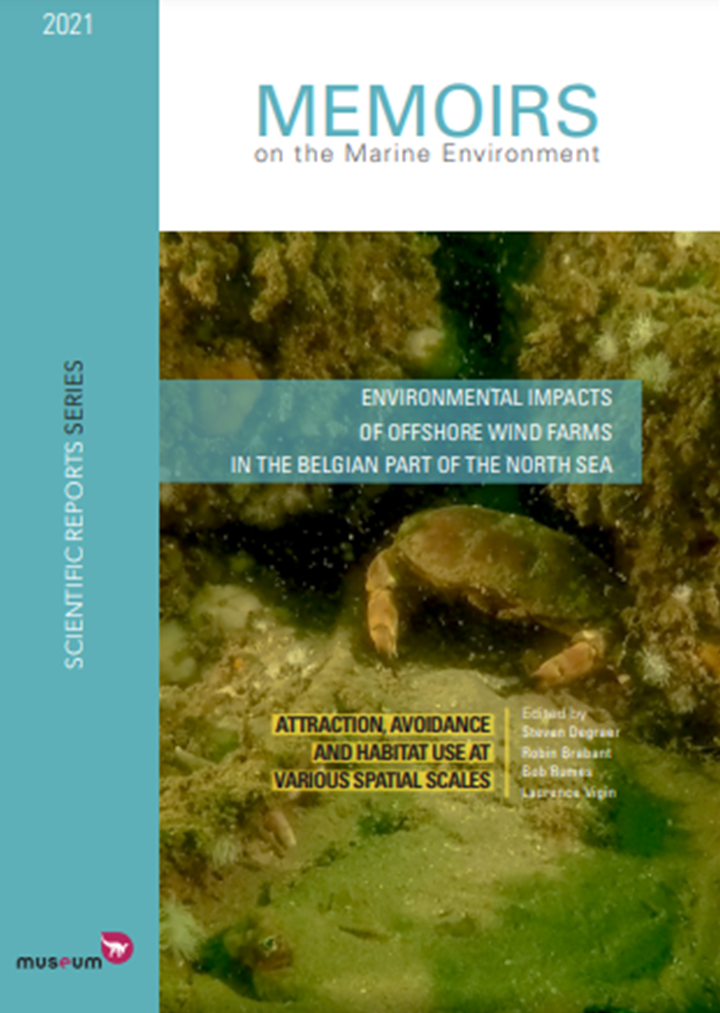
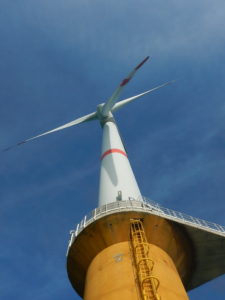 On 31 December 2019, Belgium submitted a National Energy and Climate Plan to the European Commission which envisions a target figure of 17.5% for the contribution of the production of electricity from renewable energy sources by 2030. Offshore wind farms in the Belgian part of the North Sea are expected to make an important contribution to achieve that goal. They are in fact already doing so, as currently 10 % of the total Belgian electricity demand, or 50% of the electricity demand of all Belgian households, is already produced by offshore wind farms. This is realised by a total of 399 turbines in eight wind farms, grouped in a zone of 238 km² along the border with the Netherlands. After 12 years of construction, this zone was fully operational from the end of 2020 and accounts for an installed capacity of 2.26 Gigawatts (GW) and an average production of 8 TWh. This puts Belgium in the 5th place worldwide in the production of this form of energy. A second area for renewable energy of 285 km² is foreseen by the new Belgian marine spatial plan (2020-2026), aiming for an installed capacity of 3.1 to 3.5 GW in this zone.
On 31 December 2019, Belgium submitted a National Energy and Climate Plan to the European Commission which envisions a target figure of 17.5% for the contribution of the production of electricity from renewable energy sources by 2030. Offshore wind farms in the Belgian part of the North Sea are expected to make an important contribution to achieve that goal. They are in fact already doing so, as currently 10 % of the total Belgian electricity demand, or 50% of the electricity demand of all Belgian households, is already produced by offshore wind farms. This is realised by a total of 399 turbines in eight wind farms, grouped in a zone of 238 km² along the border with the Netherlands. After 12 years of construction, this zone was fully operational from the end of 2020 and accounts for an installed capacity of 2.26 Gigawatts (GW) and an average production of 8 TWh. This puts Belgium in the 5th place worldwide in the production of this form of energy. A second area for renewable energy of 285 km² is foreseen by the new Belgian marine spatial plan (2020-2026), aiming for an installed capacity of 3.1 to 3.5 GW in this zone.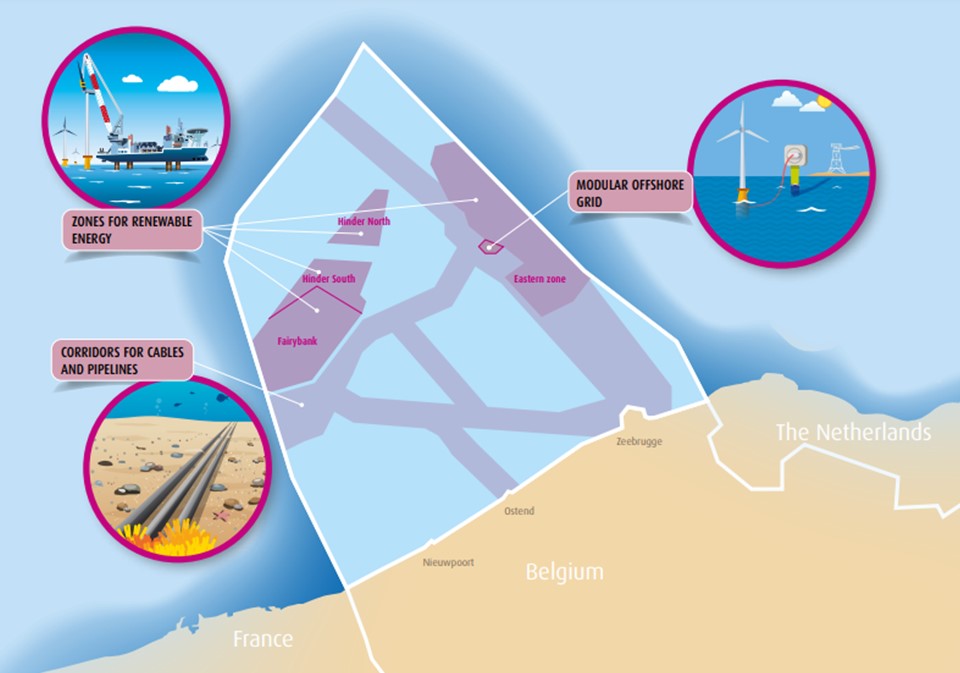
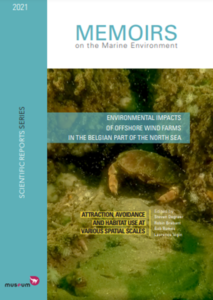 In their
In their 